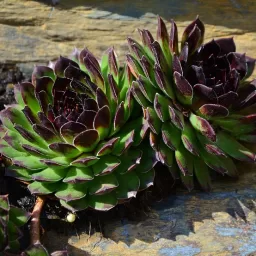How to Create Tiered Garden Walls
Now if you have that DIY attitude, wherein each and every act of ours is supposedly done by yourself without an expert’s help or guidance, then the following tips to create tiered garden walls definitely become your next task of building something new in your outdoors to make it look classy all the time.
Clear the Area
The initial step of the undertaking is to clear the zone where you’ll be building your layered wall. If there is a previous stone divider, split it up to make space for the new layered dividers. You can save money on your financial plan by reusing some old stones in your new venture. You’ll need stones with shading and appeal for the divider face, and level stones at the top.
Dig the Footings
Next, burrow the footings for the new levels. Every level will be 20 inches high, and will require a balance that is 12 inches deep, as a 12-inch balance can strengthen a divider that is up to 3 feet high.
A wall 20 inches tall ought to be 14 to16 inches thick. Anything more extensive would look out of extent. If you notice a few rocks in your balance that you can’t move, don’t freeze. They can be joined into the balance. If the stone looks adequate, you can utilize it despite the partition. Else, you can pour concrete around the stone, and fuse it into the wall. For every footing, use the same method.
Adding Concrete to the Footings
Next, add pre-blended cement to the footings, as Pre-blended cement is concrete mixed with sand, furthermore contains tiny rocks for quality. Pour the concrete into a wheelbarrow and include water, then utilize a cultivator to blend the concrete like a spread.
Keep in mind to wear all the safety gears including the face mask for the task to abstain from breathing solid dust particles. Once your concrete is prepared, empty it into the 12 inch deep column for the stability. For support, put half inch rebar along every footing. Lay the rebar into the wet solid like railroad tracks, and after that push them into the concrete until they’re down. The rebar will keep the footing from breaking and will avert ice hurls in the winter time. Wait until the concrete has set up (around 12 hours,) before starting to set the stone.
Blend the Mortar for Building the Wall
Before setting any stone, your initial step is to blend the mortar. There are two approaches to blend mortar, by hand or by machine. For a big task, think about leasing as a mortar blender. A “one bagger” will hold one sack of mortar, in addition to sand and water.
To begin with, include the water. As a rule, one sack of Type S mortar will require one 5-gallon bucketful of water. But, the measure of water can shift, depending upon the wetness of the sand, so first put in around 3/4 of your 5-gallon basin of water.
Next, include the sand and mortar. One sack of Type S mortar will require around 16 scoops loaded with artificer sand. With the blender going, you can include whatever remains of the water as required. For a smaller property, you can blend the mortar by hand. In a wheelbarrow, dry blend Type S mortar with bricklayer sand, then gradually pour in the water. Utilize the same proportions of sand and water, (around 16 scoops loaded with sand, and around 5 gallons or water).
Assemble the Wall
Before really assembling the wall, you’ll need to ensure it is level and straight. To start with, set up steel bars or wood stakes for posts at every end of the divider, and run a string line between them. Keep in mind that it is vital for your string to be square against any adjoining dividers or structures. Now you’re prepared to begin laying down stone. In case you’re working by a wall, then the best place to begin is against that divider. In case you’re not against a divider, then it’s best to begin in the center.
Develop Weep Holes
When you’re building a retaining divider, you should make a way where the water will go. If not, the water can develop and harm your wall. Take split stone and stack it up to make a “colony” close to the base of the divider, each five feet or something like that.
Construct every colony at the back of the wall, so that a stone can be set before it. Utilize enough mortar to contain the broken stones. Lay a stone before the weep holes and as you’re setting it, make sure to leave a joint dry. Water will be pulled in to and course through the stone bee sanctuary, and way out the dry joint in front. Develop extra layers of stone, continually looking out for the types and sizes of stone. You’ll need a decent measure of assortment and difference for a county look.
Capping the Wall
The following step is to top your wall. Regardless of the fact that you’re building a provincial ranch divider, despite everything you need a pleasant top. For topping, you’ll need stones that have a smooth and level top. With a stone such as Connecticut green, you can make capstones by tapping a thick stone with carbide etch along the stone’s veins, to part the stone into level pieces. To guarantee that your top stones are all at a level tallness, run a rigid string between the two crowbars at capstone level.
Run a line over it to ensure the capstones are level. A few stones might have a decent smooth top, however will sit at an edge, with one end thicker than the other. Try not to stress as another topping option in this case can also be some elegant and sturdy variety of artificial outdoor foliage, which will also provide a visual appeal in the form of artificial boxwood hedge, or green wall with iron mesh can also do the trick.
Set the stone to your string, so that the top is level. At that point include a little level stone, known as a shim, underneath your bigger stone, and that will make it level all around. If you don’t have any shims lying around, you can wear down some large stones to make a few.
Join the Top Cap
The last step to building every wall is jointing the top. The jointing is essential since you don’t need any water sitting in open joints. Begin by filling in the joints with mortar. Utilize a trowel and jointer to pack the joints until they are somewhat recessed. Smooth the mortared intersections by brushing them with a modest paintbrush.
Likewise oust extra mortar from the joints on the substance of the divider. This step should be done when the mortar has set a bit, however before it dries. Utilize the jointer to uncover the mortar until it is consistently recessed around 1-2 inches. This will give you a divider that resembles a dry-stack ranch divider; however that has the quality of cement. Once your first wall is finished, you can repeat the same steps for your extra dividers.
Include the Finishing Touches
Now that your new walls will require something to hold, spread soil behind every tier and include landscaping. For a classy, sublime and everlasting look, go for a mix of real and artificial outdoor plants and flowers. This fake outdoor greenery can mix into your natural outdoor, and bring an everlasting look to your enclosure.
rock garden
#Create #Tiered #Garden #Walls
Will be pleased to have you visit my pages on social networking .
Facebook page here.
Twitter account is here.
Linkedin account here
Post byBedewy for info askme VISIT GAHZLY







